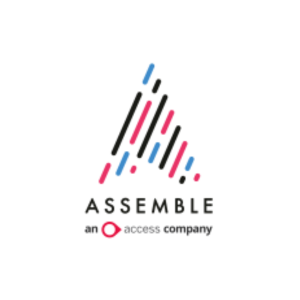Insights
INSIGHTS
All Topics
How to secure investment for new technology
01 Nov 2023by Ioan Marc Jones
We explore key takeaways from a recent Salesforce.org report, which shows how IT leaders can gain stakeholder buy-in for technology and pave the way towards digital transformation
Failure to gain stakeholder buy-in is a primary obstacle to digital transformation. Non-profits often find themselves struggling to convince internal leaders that it’s worth investing in the right tech, even when the board broadly appreciate the importance of tech. Such investments, particularly in times of economic hardship, may fall down the priority list, despite the potential benefits like streamlining, optimisation, and cost-reduction.
The Salesforce.org report, ‘Securing Buy-In from Your C-Suite and Board’, helps IT leaders secure stakeholder buy-in and become champions of digital transformation. The report explores, among other things, barriers to buy-in, the main Chief Information Officer (CIO) imperatives, the Chief Financial Officer (CFO) expectations, the Chief Executive Officer (CEO) priorities, and so much more. It provides a holistic approach, giving IT leaders all the tools and information they need to secure tech buy-in.
The six key barriers to buy-in
The Salesforce.org report starts by identifying six core barriers to leadership buy-in. Each barrier comes with some ‘Insight’ that elaborates on the causes and the nature of the barrier, alongside an ‘Action’ that prompts IT leaders to take steps to overcome the barrier. The six barriers are:
-
Rigorous changes in the procurement process
-
Deeper levels of executive scrutiny
-
Higher demand for cost-benefit clarity
-
Stronger need for data privacy and security
-
Concerns over cost and disrupted implementation
-
Ongoing insistence on protecting funding reserves
Much more detail about the above barriers can be found in the report. Some barriers will apply more to your organisation than others, but the report will help you take initial steps to overcome them.
CIO imperatives, CFO expectations, CEO priorities
The report then explores the imperatives facing the non-profit CIO. CIOs must take responsibility for digital transformation, looking beyond fashionable solutions and finding the tech that meets current needs and capabilities. The report highlights three key imperatives for CIOs:
-
Getting to know and fully understand the real business problems
-
Assessing your assumptions about CFO, CEO, and Board priorities
-
Fostering a culture of experimentation and innovation
The report goes into detail about the above, with more ‘Insight’ and ‘action’ guides that show IT leaders how the process might work, steps they might take, and how they might act on the imperatives.
CFO expectations are also decoded. The non-profit CFO has a vital – and often underestimated – role in evaluating and approving digital proposals. So the IT leader needs to properly understand that role and meet the requirements. Recommendations for leaders include:
-
Appreciate the CFO’s broader financial perspective
-
Address the most pressing questions confronting CFOs
-
Help stakeholders become tech champions
Finally, the report shares CEO priorities. By understanding CEO priorities, IT leaders can address those and ensure that proposals are aligned with them, making it more likely to gain the buy-in they need.
The key is trying to align technology with strategic goals, adopt a wider view of your non-profit organisation, and mitigate risks. Here are the four priorities highlighted by Salesforce:
-
Align with the organisation’s strategic intent
-
Consider the organisation’s appetite for risk and innovation
-
Engage stakeholders early in the process
-
Address the underlying concerns from stakeholders
IT leaders should aim to understand these priorities and include them in their business case for tech buy-in. If IT leaders can address such concerns, the chance of success will drastically increase.
And, finally, review the summary for IT leaders on how to ‘crack the code’ of leadership buy-in, with eight steps provided to help turn stakeholders into advocates of digital transformation. You can read the eight steps, and more detail on all of the above, by downloading the Salesforce.org report here.
Ioan Marc Jones
More on this topic
Recommended Products
Recommended Products
Our Events
Charity Digital Academy
Our courses aim, in just three hours, to enhance soft skills and hard skills, boost your knowledge of finance and artificial intelligence, and supercharge your digital capabilities. Check out some of the incredible options by clicking here.




















